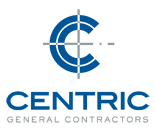We believe effective planning allows projects, big and small, to progress through each phase on more solid ground. How? The planning process makes it possible for project stakeholders to apply their specific expertise to flesh out an approach that meets the required scope.
But, it’s not easy.
Before kicking off the project planning effort, it is best to have answers to the following questions:
- Currently, who is a part of the project team?
- Who will be occupying the building/structure (user groups)?
- What is the desired project program?
- Where is the project located?
- What are the general budget requirements?
- What is the desired date for the client to occupy the structure?
 It is an early morning in January and the team at Centric General Contractors is kicking off one of their many planning meetings.
It is an early morning in January and the team at Centric General Contractors is kicking off one of their many planning meetings.
Let’s assume we have answers to these questions – now we can begin work on a well-thought plan. The following are the fundemental elements required for a sound project planning effort:
- Incorporate Consistent, Timely Communication: Regular, on-time communication throughout a project’s lifetime will eliminate surprises and create cohesion among all stakeholders.
- Communicate the Project Vision and Develop a Realistic Scope: Reliable project plans begin at the conceptual planning phase. During this phase, project stakeholders begin to develop the initial vision and scope of realistic plans. The idea is to break down a project solution in detail and develop a high level plan for milestones.
- Incorporate a Reliable Value Engineering Effort: Project planning should incorporate value engineering, a method for enhancing a project’s value. Value is often defined as the ratio of function to cost. In effect, the project team works together to identify ways to create functional improvements and/or provide a reduction in project costs. Also read, 8 Steps to Optimize Your Next Project With Creative Value Engineering.
- Identification of Qualified Resources: Reliable project planning identifies the right combination of resources to effectively perform the required work for each phase/s. It is important to go through a qualification process to evaluate (1) relevant experience, (2) past performance, (3) financial stability, and (4) ability to support the project requirements based upon current workload.
- A Schedule of Project Activities and Milestones: A master project schedule should incorporate deliverables from project inception through to completion. Some areas to cover include project permitting, design development, agency plan checks, long lead equipment and materials, construction activities, equipment installation, equipment commissioning and final project close-out.
- Identification of Long Lead Equipment and Materials: A reliable project plan identifies the equipment and materials that will take some time to obtain. Once identified, this information is then captured in the project schedule.
- A Well-Conceived Budget and Cost Management Process: Once the conceptual plans are finalized and the scope is defined, it is time to prepare a project budget and plan for managing cost. Together, the team reviews the budget to make sure it meets the owner’s expectations. Once the budget is set, it is important to remain vigilant in making sure the project costs are on budget.
- Includes Quality Control Activities: A reliable project plan incorporates an effort to ensure the overall quality of work. Regular quality checks, at each phase, will help ensure a well-crafted and high-quality project.
As you can see, there are a lot of areas to cover in order to ensure a sound project plan. It is important to mention that the plan is not conceived all at once – rather, it is a gradual process that requires project stakeholders to work together on an ongoing series of activities throughout the course of a project’s lifetime. A good project plan is flexible, manageable and captures the required information when it’s needed.
After reading this post, do you think we missed something? Is so, please share your thoughts in the comments section. We greatly encourage feedback!
